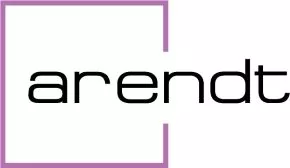On 19 December 2023, ESMA published its final report setting out the draft regulatory technical standards (RTS) for Regulation (EU) 2015/760 on European long-term investment funds (ELTIFs), as amended by Regulation (EU) 2023/606, also known as the ELTIF 2.0 regime. In accordance with the legislative mandate, the draft RTS specify obligations concerning hedging derivatives, redemption policy and liquidity management tools, trading and issue of units or shares of an ELTIF and transparency requirements. Once adopted and published, the draft RTS will repeal and replace Commission Delegated Regulation (EU) 2018/480.
What are the main technical standards?
The draft RTS provide, among others, a detailed framework for the following areas that are relevant where an ELTIF's rules or instruments of incorporation provide for the possibility of redemptions during the life of the ELTIF:
- Minimum holding period
The draft RTS propose that the manager of an ELTIF determines the minimum holding period. In doing so, the manager of the ELTIF must consider the criteria set out in the draft RTS. In addition, the manager of the ELTIF must be able to demonstrate to the competent regulator the appropriateness of the duration of the minimum holding period and its compatibility with the ELTIF's valuation procedures and redemption policy.
- Maximum redemption frequency and minimum notice period
The draft RTS require the ELTIF's manager to provide detailed information on the redemption mechanism to the competent regulator. This information must be provided at the time of authorisation and kept up to date during the life of the ELTIF.
The draft RTS also provide for the minimum content of the redemption policy, which must be well-documented and consistent with the ELTIF's investment strategy and liquidity profile. While the draft RTS propose a quarterly maximum frequency for redemptions, the manager of the ELTIF is allowed to deviate from this maximum if it provides justification to the competent regulator.
The draft RTS state that redemptions are only possible after a notice period is given by each investor and that the minimum notice period is 12 months. However, an ELTIF may allow investors to redeem their shares with a shorter notice period to the extent that the notice period is calibrated based on a minimum of liquid assets, as detailed in the draft RTS. The draft RTS also determine the maximum percentage of liquid assets that the manager of the ELTIF can use to satisfy redemptions, based on the duration of the notice period.
The redemption policy must be available to investors at all times.
- Choice of liquidity management tools
The draft RTS propose that the manager of the ELTIF must select and implement at least one anti-dilution liquidity management tool, among anti-dilution levies, swing pricing and redemption fees. In addition, the manager of the ELTIF may also select and implement other liquidity management tools. However, the manager can deviate from this rule if they provide justification to the competent regulator.
The draft RTS also propose rules on other topics, such as the use of financial derivative instruments for hedging purposes, the matching mechanism of transfer requests and related information to be disclosed to investors, and cost disclosures.
In its press release, ESMA states that the draft RTS seek to reach a balance by proposing prescriptive rules, while allowing ELTIF manages to deviate from these rules under specific circumstances.
The draft RTS appear to implement feedback received during the consultation period from the various stakeholders with respect to previous draft RTS. However, semi-liquid ELTIFs that offer periodic redemption rights to investors would need to apply a 12 month notice period, even for quarterly redemption days, or maintain a high minimum percentage of liquid assets (up to 40% for a 3 month redemption notice period). This deviates from current market standards and how private market retail funds are designed, economically and commercially.
What is the timeline and entry into force?
ESMA has submitted the draft RTS to the EU Commission for adoption. The EU Commission has three months to take a decision on whether to adopt the RTS, but can extend that period by one month. Once the EU Commission adopts the draft RTS, the EU Parliament and the Council of the EU will have a period of three months to scrutinise the adopted draft RTS.
Given the importance of the RTS entering into force as soon as possible after the date of application of the ELTIF 2.0 regime, that is 10 January 2024, ESMA proposes that the RTS enter into force on the day following their publication in the Official Journal of the EU.
To access the ESMA final report, please click here_
To get more information about the ELTIF 2.0 regime, please click here_ and here_
To get more information about the CSSF's ELTIF 2.0 application process, please click here_
The content of this article is intended to provide a general guide to the subject matter. Specialist advice should be sought about your specific circumstances.

